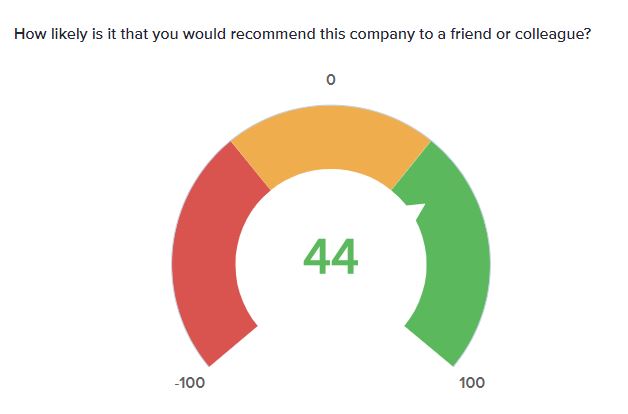Customer experience is rapidly becoming the key driver of customer choice. Besides creating brand value, investing in CX also impacts your company’s bottom line positively.
Better CX also leads to higher customer engagement. Data indicates that engaged customers buy 50% more frequently, spend 200% more each year, and are highly likely to be loyal to your brand.
Why Must Start-ups Focus on CX?
Outstanding CX results in highly engaged and loyal customers, word of mouth publicity, and consequently, more profits and growth. Besides, customer experience is intrinsically linked to employee experience (EX). This means companies that excel in CX tend to have highly motivated and satisfied employees, which is an essential ingredient for success. For start-ups, investing in CX at an early stage means they can successfully create a customer-centric organization, on the lines of the e-commerce giant Amazon, with every employee committed to customer success.
Five Ways Start-ups Can Redefine Their Customer Experience Strategy
Customer experience is not a new concept. However, it is undoubtedly an evolving one. Today, the digital revolution has empowered customers with more choice, making it imperative for businesses to focus on CX for customers to choose them over the competition.
Here are five ways to redefine your customer experience strategy and genuinely amaze your customers:
1. Map Your Users’ Journey to Identify Main Touchpoints
Modern customers interact with a brand in numerous ways. From finding information about a brand to live chatting for details to receiving a thank you email after completing their purchase, there are several steps that complete a customers’ journey with your brand. By identifying all of these steps, you can improve customer service at every touchpoint. And, to achieve this, you must ask your customers about their expectations to understand how to structure your touchpoints for maximum engagement.
We suggest developing a customer journey map with all the customer touchpoints to see if they are helping your customers achieve their objectives or not. Next, you can list your most effective touchpoints, and the ones you think your customers should be using, and place them strategically on your website for maximum engagement. For example, offering a free demo or sharing testimonials or reviews from clients are two examples of touchpoints that can be used to educate customers and build credibility.
2. Iron Out the Creases in the Conversion Funnel With a Thoughtful Onboarding Process
When Canva decided to improve their activation rates for their poster feature, their first step was to send out an email survey to users who hadn’t used the feature yet. Once they analyzed the survey results, the company discovered that its users had many different goals. For example, one group wanted to create posters for rock concerts and another for promoting their church.
The next logical question was: What could the company do to help users reach their goals?
The answer was creating a personalized in-app onboarding experience that enabled users to choose their path so that they could identify with the tool quickly and use it effectively to meet their objectives.
This is just one example. There are many ways to help your users understand your product or service to meet their objectives easily. You can start by making on-site changes, such as creating a user-friendly interface, ensuring easy site navigation, and producing video tutorials to make onboarding customers intuitive and seamless.
3. Provide Real-Time Support with Advanced Customer Support Tools
Many users abandon a website due to lack of adequate information. However, by including a live chat widget on every webpage, you encourage users to pose their queries and receive answers in real-time, leading to higher engagement, customer satisfaction, and consequently, more sales.

Besides live chat, there are other tools that boost visual engagement for users, including cobrowsing, screen sharing, annotations, and more. Cobrowsing is an efficient tool to help businesses meet their customers’ expectations by providing quick online resolutions to their issues in real-time. It enables the support agents to see customers’ browsers, albeit securely, and guide them in a better manner. Customers can also see exactly what the agents are doing and how their problems are resolved.
4. Measure Customer Experience With Applicable Metrics

You cannot gauge success unless it is measurable. That’s why it is essential to choose the right metrics to measure the success of your CX strategies, right from the outset. Two commonly used parameters are CSAT (or Customer Satisfaction Score) and NPS (Net Promoter Score). While CSAT is used for measuring short term goals, such as a shopper’s buying experience, NPS is an important metric for measuring long-term customer loyalty. By using NPS, businesses can develop their processes, products, prices, and even prevent churn to an extent.
5. Collect Feedback Actively and Act on it
Most companies realize the value of curating outstanding customer experiences to amaze their customers. However, Bain & Company reports that while 80% of companies believe they deliver super experiences, less than 10% of customers agree!
So, how can you tell if you are delivering excellent customer experience?
By simply asking your customers or capturing feedback in real-time.
For example, you can use live chat to have real-time conversations with clients and follow up the conversation with a short post-interaction survey.
Conclusion
Customers are increasingly demanding with every passing day, and expect more out of the brands they interact with. Especially in this era of information, word of mouth travels quickly, making it imperative for start-ups to ‘start’ on the right foot by focusing on great customer experience right from the outset. The tips mentioned in the article will help not only fledgling start-ups but also larger organizations to redefine their customer experience strategies for good.

Sam Makad is an experienced writer and marketing consultant. His expertise lies in marketing and advertising. He helps small and medium enterprises to grow their business and overall ROI. Reach out to Sam Makad on Twitter or LinkedIn.






